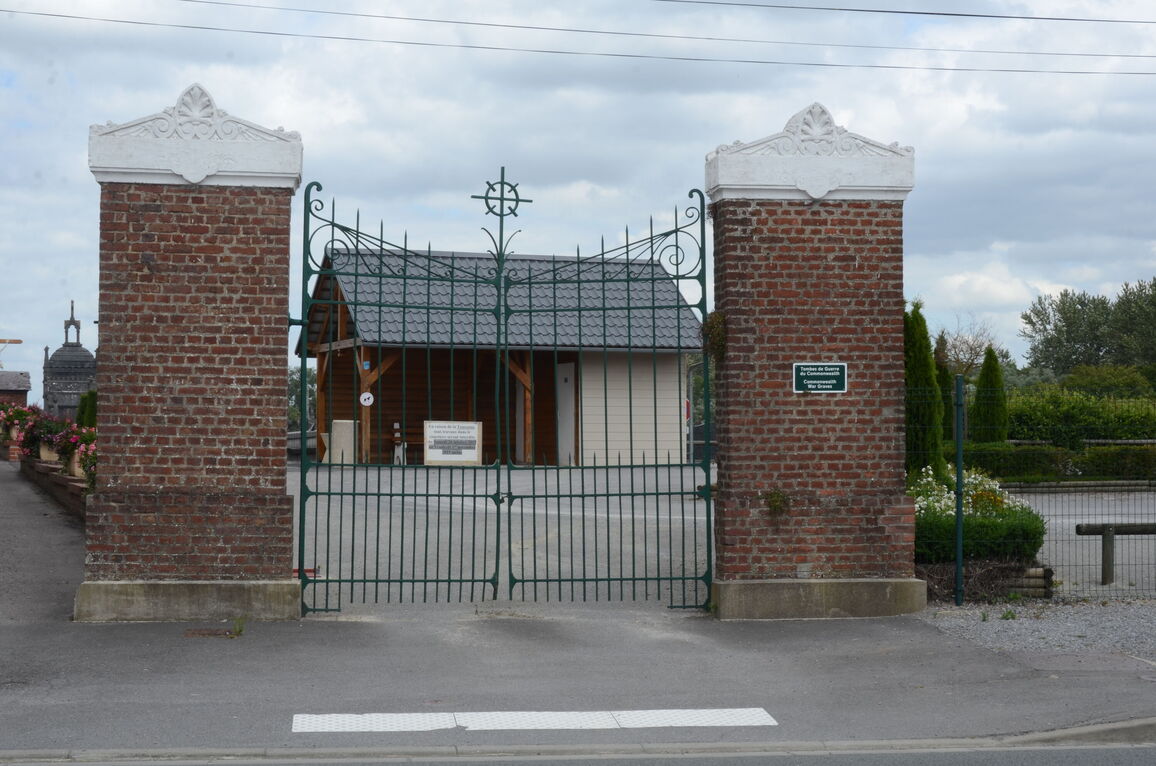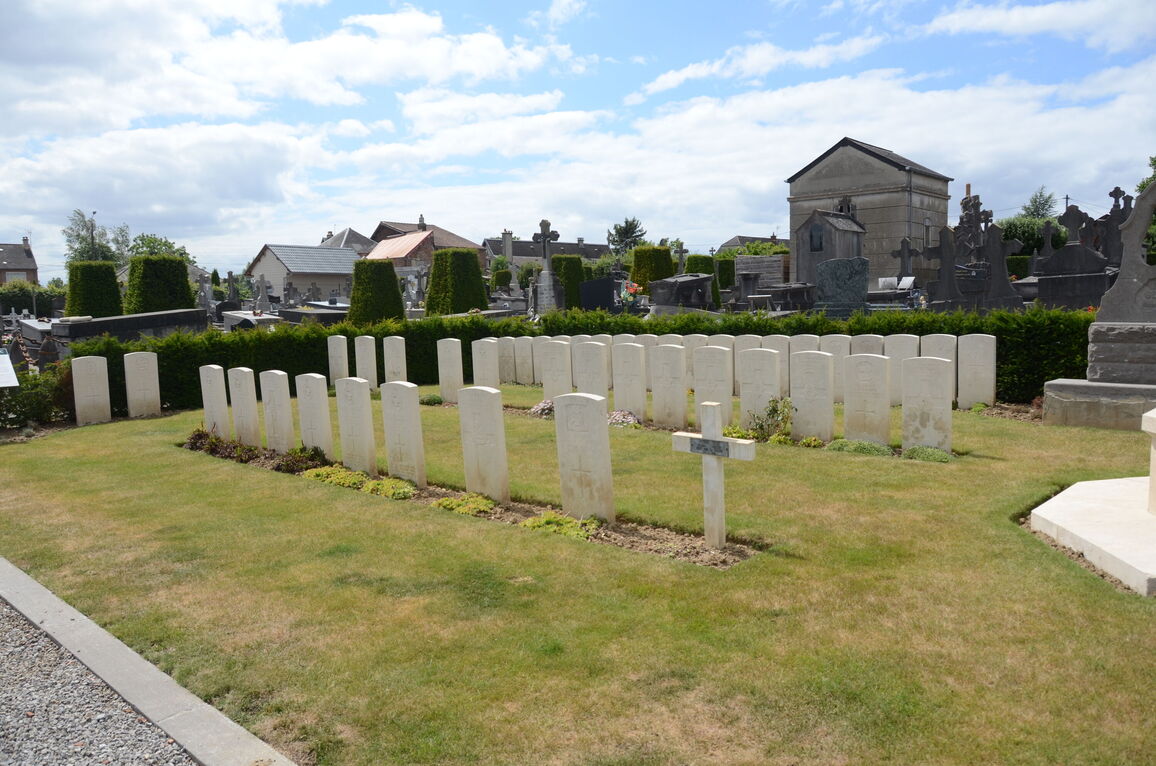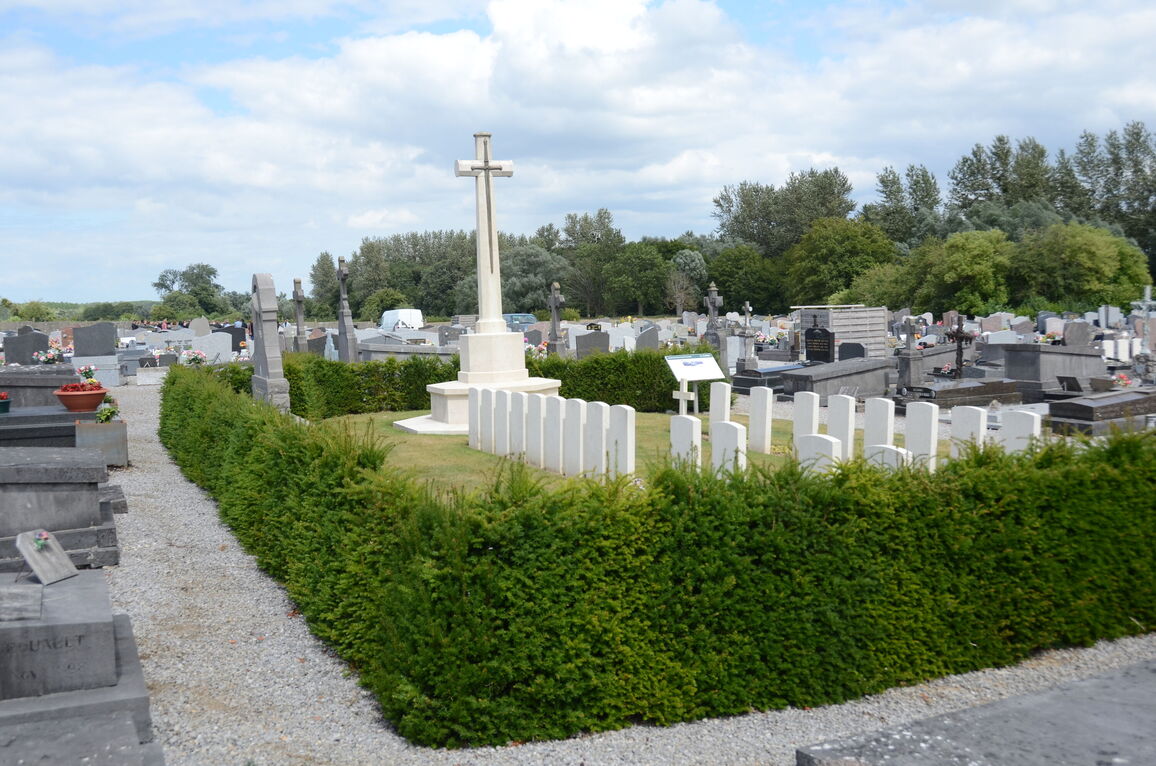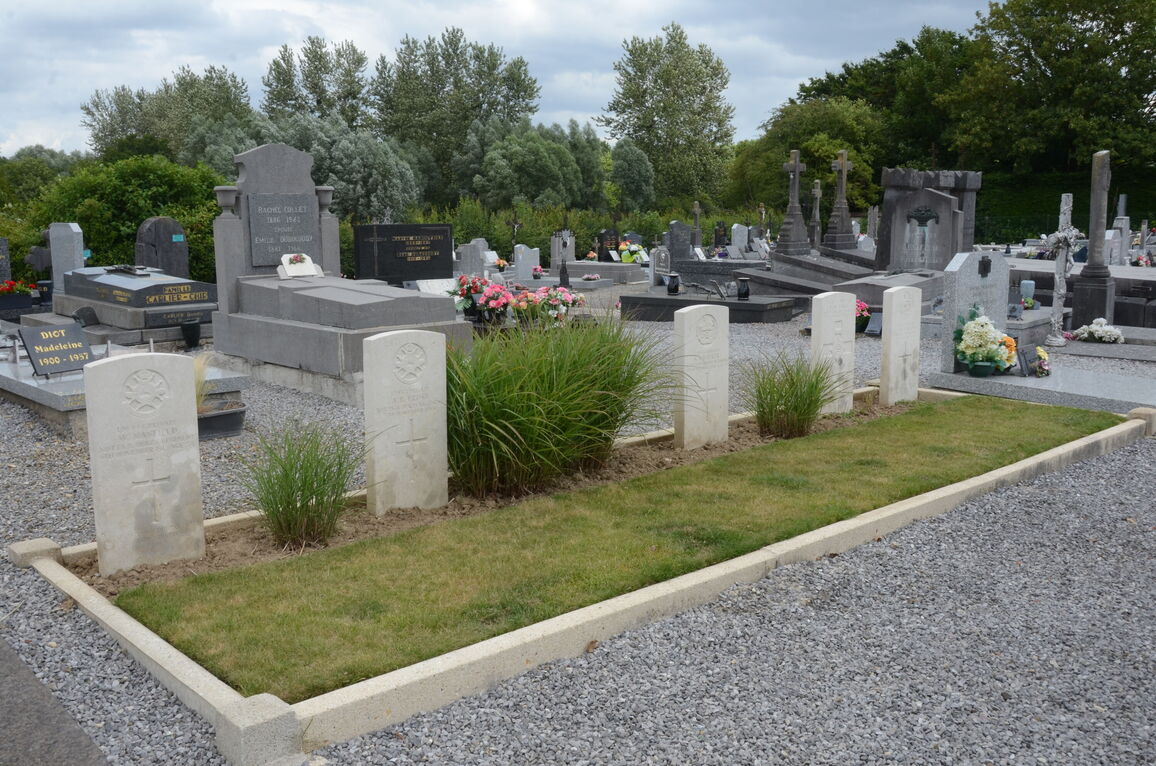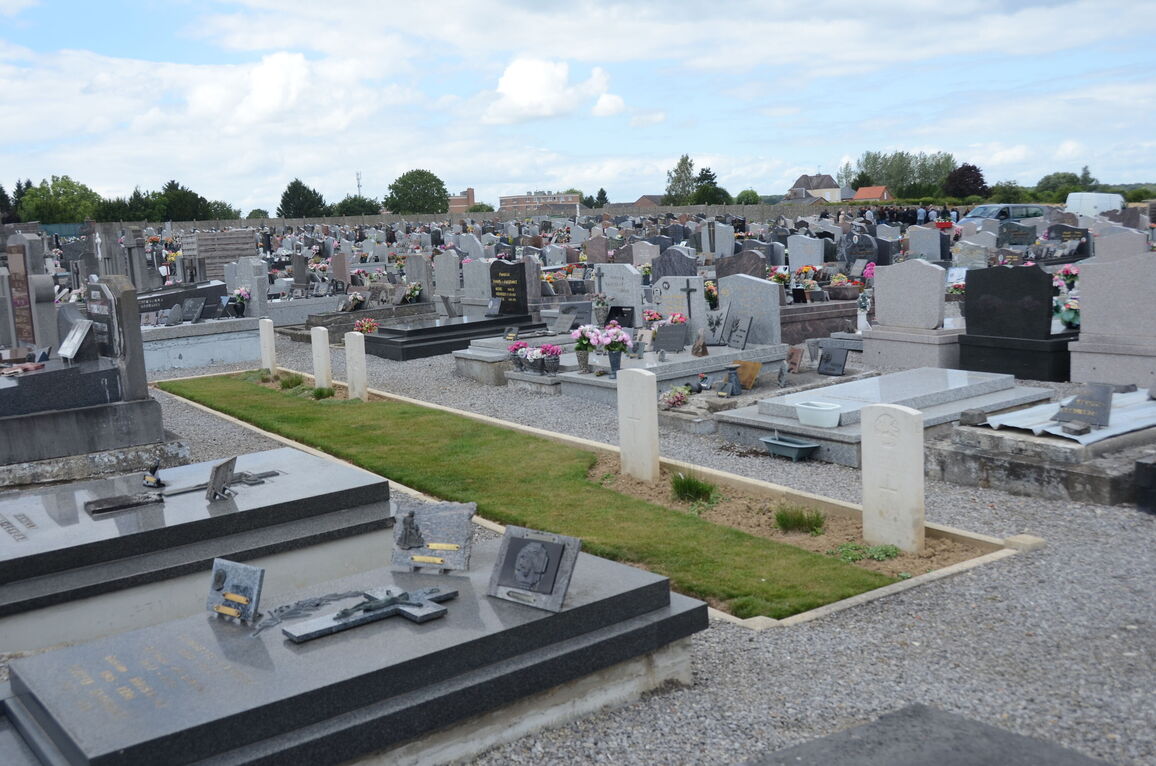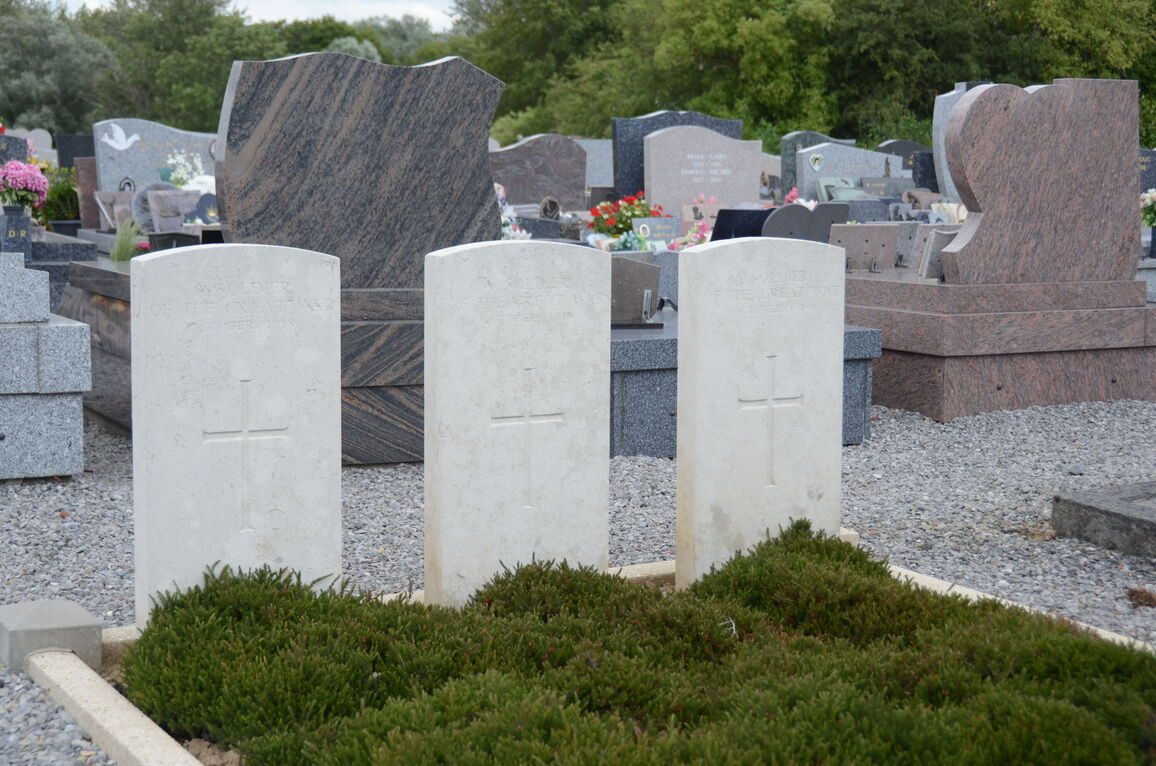Landrecies Communal Cemetery
- Country France
- Total identified casualties 54 Find these casualties
- Region Nord
- Identified casualties from First & Second World War
- GPS Coordinates Latitude: 50.12016, Longitude: 3.69687
Location information
Landrecies is a small town in the Department of the Nord, approximately 40 kilometres south-south-east of Valenciennes. The Communal Cemetery is east of the town on the road to Maroilles, the Faubourg de France (D959). The cemetery contains Commonwealth graves from both World Wars, the majority of which can be found in the War Graves Plot. There are also eight isolated plots.
Visiting information
The register is available in the Mairie from Monday from 13.30 to 17.30 Tuesday to Thursday from 8.00 to 12.00 and from 13.30 to 17.30
Friday from 8.00 to 12.00 and from 13.30 to 16.30 and Saturday from 8.00 to 12.00
History information
Landrecies Communal Cemetery
Landrecies was the scene of rear-guard fighting between the British and German forces on the night of 25 August 1914. The town remained in German hands from then until it was captured by the 25th Division on 4 November 1918. During the war, the communal cemetery had largely been used by the German forces for the burial of their own dead. After the Armistice the German graves were removed, leaving three groups of Commonwealth graves in the cemetery. The cemetery now contains 56 Commonwealth burials and commemorations dating from the First World War, including 30 graves of soldiers killed during the rearguard action. 11 of the burials are unidentified but there are special memorials to two casualties known to be buried among them. The cemetery is also the final resting place of eight Commonwealth servicemen of the Second World War.
The Rearguard Action at Landrecies
The first major clash between the British Expeditionary Force (BEF) and the Imperial German Army on the Western Front took place at Mons on 23 August 1914. In the aftermath of the Battle of Mons, the British and French forces began a long, hard retreat south west toward Paris. Shortly after 5 p.m. on 25 August, the 4th (Guards) Brigade of the BEF halted at Landrecies. The Guardsmen had been marching all day and had hoped to get some much needed rest, but reports that large numbers of German troops were approaching from the north forced them to prepare for an imminent attack. As the civilian inhabitants of Landrecies fled, the officers and men of the Brigade took up defensive positions around the village and waited. To begin with, very little happened, and it seemed that the reports of German forces in the area were a false alarm. Just as it was getting dark, however, the men of the 3rd Coldstream Guards heard the sound of advancing infantry along the road to Le Quesnoy. As the troops in the distance appeared to be wearing French and Belgian uniforms and were singing in French, the Guardsmen thought they were about to meet a column of Allied troops. Yet as they approached the British lines, the advancing soldiers opened fire and it became clear that they were German infantrymen. The Coldstreams immediately returned fire and the attackers were soon beaten back.
For most of the night that followed fierce fighting took place on the outskirts of Landrecies as the attackers repeatedly charged the positions of the 3rd Coldstreams, who were reinforced by their comrades in the 2nd Battalion, along with units of the Grenadier Guards and the Irish Guards. At one point during the engagement, German troops managed to creep along the flanks of the British positions and fire on the Guardsmen at close range, while a flaming haystack allowed German gunners to see the defenders through the darkness and bombard them with shells. Despite these determined efforts to take the village, the Brigade was able to keep the attackers at bay. The fighting ended not long before dawn as the attacking soldiers, who belonged to the advanced guard of the German IV Corps, began retreating to positions outside Landrecies and the surviving Guardsmen rejoined the general Allied retreat.
The night-time skirmish at Landrecies was one of several costly but effective rearguard actions fought by units of the BEF during the retreat from Mons. By engaging the enemy throughout the night and holding the village, the Guardsmen had allowed III Corps of the BEF retire from the area in relative safety. In recognition of this, Sir John French, Commander in Chief of the British Forces, mentioned the Brigade in despatches on 7 September.



